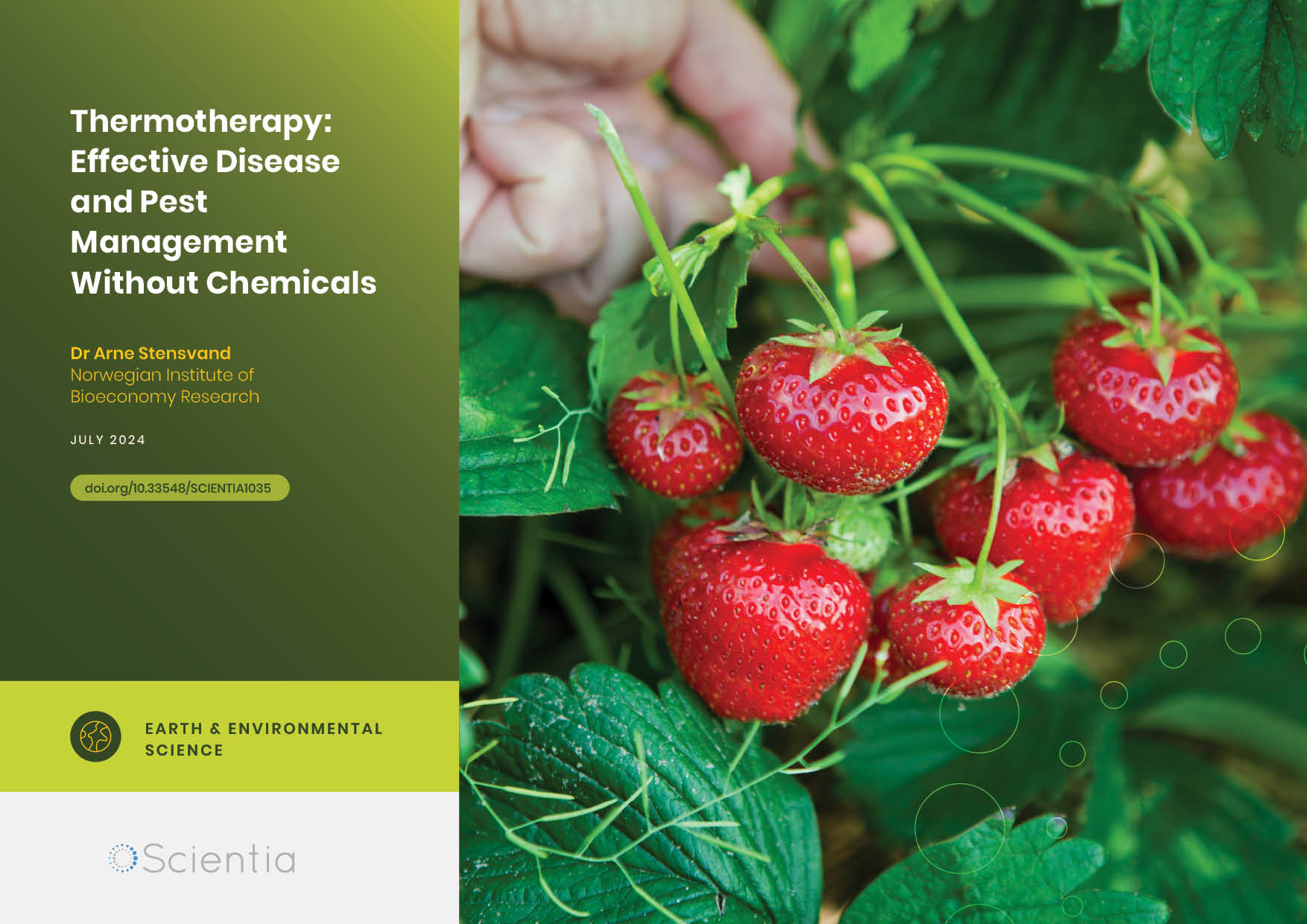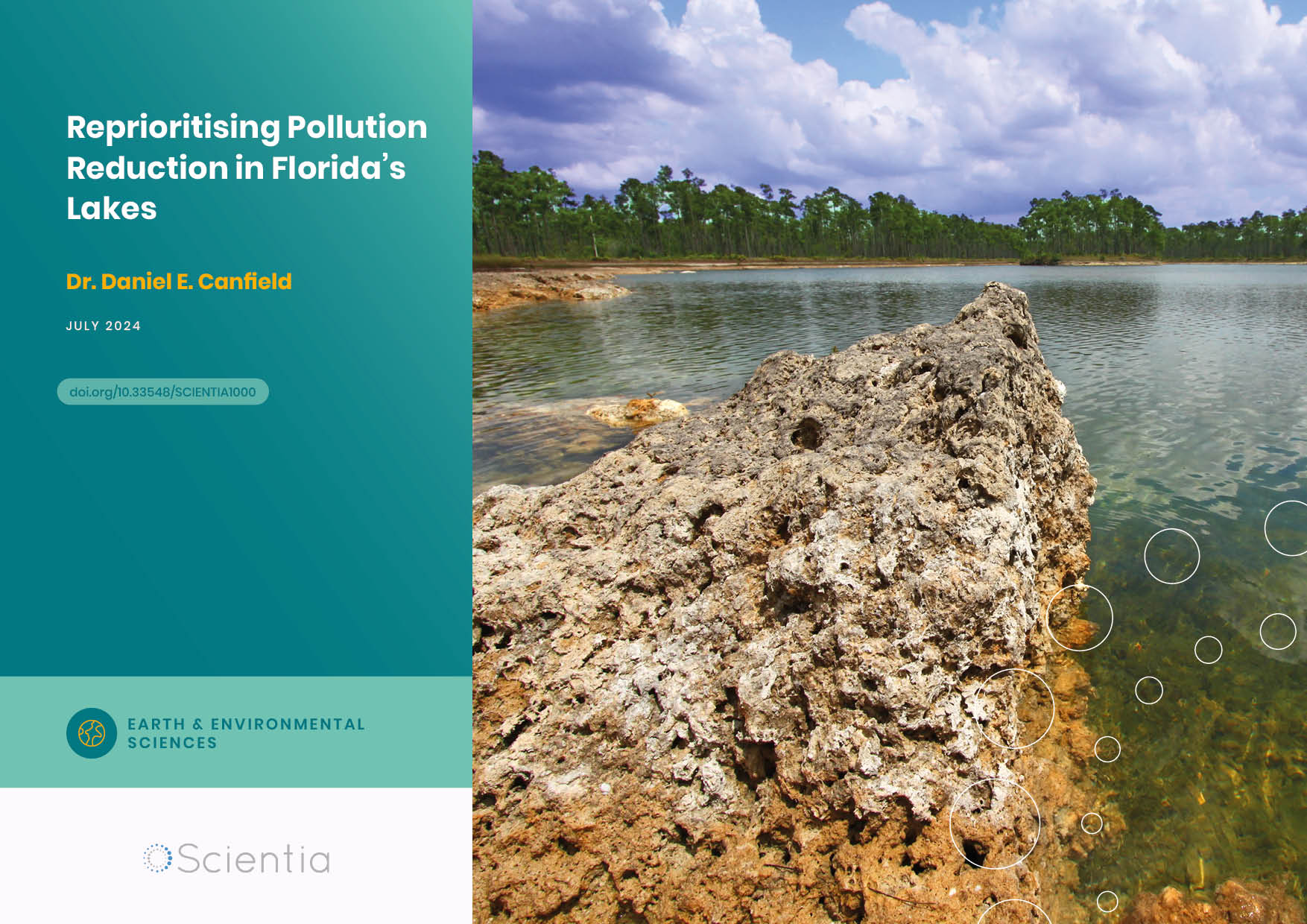Dr Robert Larkin | Cultivating Change to Improve Soil Health and Increase Potato Yield
Environmental quality and food production are facing the pressing challenges of climate change and global population growth. Dr Robert Larkin from the United States Department of Agriculture-Agricultural Research Service (USDA-ARS) and a team of plant scientists developed and tested a range of crop management systems to help overcome these compounding challenges. Their work is improving soil health and increasing the yield of potato crops, contributing to the future food security of nations.
Feeding a Changing World
Our world is changing. While the global population continues to grow, we also see global warming patterns, increased extreme weather, and changes to the traditional seasons. All these factors are making it harder to feed the global population. An international organisation within the United Nations, known as the World Food Programme, reported that over a quarter of a billion people dealt with acute hunger in 2022 – and this figure is only expected to rise.
We need to produce more nutritious food to provide for the increasing population in a way that does not negatively impact the environment. To achieve this, we need to adopt positive changes in the way we grow, produce, and distribute food.
The humble potato is the third most important food crop in the world. In the US, potato production was valued at $4 billion in 2021, providing thousands of jobs to people within the country and, as one of its largest agricultural exports, food to people around the world. Potatoes contain high-quality energy and a range of important vitamins and minerals, making them an important crop. Whilst potatoes are an ideal food source for a growing population, the process of potato agriculture can be damaging to soil, leading to potential unsustainability of the crop.
Importance of Soil Health
Soil is the upper layer of earth where plants grow. It is a key example of how, by looking after our environment, it is better able to support us by producing food. Soil health is vitally important for agriculture but easily damaged by intensive farming.
Soil health is multifactorial – healthy soil has an accessible supply of energy and nutrients, depth and stability for root growth, a large and diverse population of beneficial soil microorganisms, the ability to hold water without becoming logged, and the resilience to quickly recover from unfavourable conditions such as flood or drought. Intensive agricultural production can disrupt the soil health and structure, leading to erosion and loss of soil fertility and biodiversity. All of these have negative human and financial consequences due to reduced crop yield and damage to local ecosystems.
There are several ways to improve soil health and crop yield. These include crop rotation, where different types of plants are grown on the land over a series of years. This benefits soil fertility as different plants have different nutrient requirements, and changing the crop reduces the chances of soil nutrient deficiencies. Planting the same crop repeatedly can lead to a build-up of pests and pathogens that target specific crops, so rotating crops can disrupt the life cycle of crop diseases and reduce the risk of infection. Some crops also have properties that repel soilborne diseases and so can protect subsequent crops grown in the area. Similarly, some crops can suppress or out-compete weeds, reducing weed problems and the need for herbicides in later crops.
Cover crops and green manures can also be used to protect and enhance the soil. Cover crops are plants typically grown over winter, which protect the soil from wind and water erosion. They also improve the soil by adding organic material and suppressing weeds. These crops can be removed before the primary crop is planted or turned into green manure by being incorporated into the soil, where they decompose and release their nutrients. Reducing tillage, which is the digging and manipulation of the soil prior to planting, has also been shown to improve soil structure and health.
Dr Robert Larkin is a Research Plant Pathologist with the United States Department of Agriculture, with established expertise in sustainable agriculture and the use of soil and crop management to increase soil health and productivity. Dr Larkin and his team conducted a decades-long experiment to understand and improve crop management systems to improve soil and plant health and productivity in potato agriculture.

Images credit: Robert Larkin.
Addressing Limitations with Cropping Systems
Dr Larkin and the team conducted experiments to determine which factors were most limiting to potato production and how those limitations could be addressed through cropping systems. They assessed the impact of different crop systems on soilborne potato diseases, soil microbiology, soil health, and crop productivity. They then worked to ensure these systems were economically and practically feasible and appropriate for current potato-growing techniques. The long-term efficacy of these systems was also investigated, with tests running up to 15 years after the systems were initially put into place.
The trials began in 2004 at the USDA-ARS New England Plant, Soil and Water Laboratory Field Experimental Site in Maine. Three specific crop systems were developed to address the goals of soil conservation, soil improvement, and disease suppression. These systems all had three-year rotation patterns (including cover crops), the soil improvement area was treated with several years of supplementing with dairy manure compost, and the disease suppression area included crops known to reduce certain potato pathogens. These areas were compared to areas treated as standard Maine potato fields undergoing a two-year rotation and standard farming practice, and an area in which potatoes were continuously grown (non-rotating area).
Soil and potato crops from each area were analysed for four consecutive cropping years from 2015 to 2018. The team found that cropping systems impacted many aspects of soil health, with the effects increasing over time and often having lasting residual effects.
All crop systems positively affected physical, chemical, and biological markers of soil health as well as the potato crop yield in comparison to the area where potatoes were grown with no crop rotation. The disease-suppressive system effectively reduced multiple soilborne potato diseases and increased potato yield. The soil improvement system gave the greatest benefits to soil health and crop production and, overall, increased potato marketable yields by an average of 60% compared to no rotation and 36% compared to standard cropping practices. Increased soil organic matter content in the soil improvement system provided greater water availability for crop growth, among other soil benefits. These differences were most notable in 2017, a year of record hot and dry weather, when the soil improvement area produced an impressive 183% higher marketable yield of potatoes than the non-rotating area. This finding, in particular, highlights the importance of Dr Larkin’s work in the face of climate change.
Human and Economic Implications
The experiments conducted by Dr Larkin and his team have considerable human and economic implications. By building on previous studies, they have advanced the practical application of multiple factors within cropping systems on productivity and soil health. Now, these advances can be used to reduce soilborne disease, increase environmental quality and soil health, and increase food yield – benefiting both farmers and consumers around the world.
SHARE
DOWNLOAD E-BOOK
REFERENCE
https://doi.org/10.33548/SCIENTIA1049
MEET THE RESEARCHER

Dr Robert Larkin
United States Department of Agriculture-Agricultural Research Service
New England Plant, Soil, and Water Laboratory
University of Maine
Orono, ME
USA
Dr Robert Larkin has worked as a Research Plant Pathologist with the United States Department of Agriculture-Agricultural Research Service (USDA-ARS), New England Plant, Soil, and Water Laboratory in Orono, Maine, for the past 25 years. He leads a team conducting research on the biological and cultural control of soilborne diseases, disease-suppressive rotation crops, sustainable cropping systems, soil health, and soil microbial communities, and he is an expert in potato and organic vegetable production systems. Prior to his role at USDA-ARS, Dr Larkin received his PhD in Plant Pathology from the University of Florida and then conducted postdoctoral research in soilborne diseases at the University of Missouri and North Carolina State University. Alongside his research commitments, he serves on the Editorial Board of the journal Agronomy and has organised and chaired previous Northeast Potato Technology Forums.
CONTACT
E: bob.larkin@usda.gov
KEY COLLABORATORS
Dr Jianjun (Jay) Hao, University of Maine, Orono, Maine, USA
Potato Soil Health Project, Carl Rosen, Project Director, University of Minnesota, USA
FUNDING
USDA Agricultural Research Service
FURTHER READING
RP Larkin, Long-Term Effects of Compost Amendments and Brassica Green Manures in Potato Cropping Systems on Soil and Crop Health and Productivity, Agronomy, 2022, 12, 2804. DOI: https://doi.org/10.3390/agronomy12112804
RP Larkin, CW Honeycutt, TS Griffin, et al., Potato Growth and Yield Characteristics under Different Cropping System Management Strategies in Northeastern U.S, Agronomy, 2021, 11, 165. DOI: https://doi.org/10.3390/agronomy11010165
RP Larkin, TS Griffin, CW Honeycutt, et al., Potato Cropping System Management Strategy Impacts Soil Physical, Chemical, and Biological Properties over Time, Soil and Tillage Research, 2021, 213, 0167–1987. DOI: https://doi.org/10.1016/j.still.2021.105148

REPUBLISH OUR ARTICLES
We encourage all formats of sharing and republishing of our articles. Whether you want to host on your website, publication or blog, we welcome this. Find out more
Creative Commons Licence (CC BY 4.0)
This work is licensed under a Creative Commons Attribution 4.0 International License. 
What does this mean?
Share: You can copy and redistribute the material in any medium or format
Adapt: You can change, and build upon the material for any purpose, even commercially.
Credit: You must give appropriate credit, provide a link to the license, and indicate if changes were made.
SUBSCRIBE NOW
Follow Us
MORE ARTICLES YOU MAY LIKE
Dr Arne Stensvand | Thermotherapy: Effective Disease and Pest Management Without Chemicals
Dr Arne Stensvand and his team at the Norwegian Institute of Bioeconomy Research are developing physical methods of pest reduction in plants. The team is specifically interested in strawberry plants, for which pest management is vital for crop success. They are pioneering thermotherapy as a heat treatment method to provide an environmentally effective and economically sound non-chemical approach to pest management.
Dr. Daniel Canfield | Reprioritising Pollution Reduction in Florida’s Lakes
Florida’s landscape is dotted with thousands of lakes that reflect regional geology, topography and anthropogenic activities. Phosphorus and nitrogen are critical nutrients for maintaining the wide range of biological production expressed across Florida, but excessive inputs of these nutrients due to past human activities impair many waters. There has been a long history of work aiming to address associated water quality pressures, and Dr. Daniel Canfield at the University of Florida has been at the centre of these efforts for over 40 years. Now, with the correction of point-source nutrient inputs, Dr. Canfield proposes that holistic lake management, including the integration of in-lake management strategies with a focus on organic sediment removal, should be much more prominent on the US government’s agenda to provide faster restoration of stakeholders’ lake usability.
Dr Jon Tore Lieng | Dynamically Installed Anchors for Floating Offshore Turbines
Effectively harnessing offshore wind presents a valuable opportunity to increase energy supplies. Floating wind turbines present several advantages over traditional fixed turbines in more shallow waters. Dr Jon Tore Lieng from Deep Sea Anchors and colleagues have developed a type of dynamically installed anchor to hold the structures in place while reducing both the costs and complexity associated with installation where cohesive seabed sediments are realised.
Dr Lifei Wang | Can Species Distribution Models Inform Us About Future Ecosystems?
The world is buzzing with news about how human activities and climate shifts are reshaping our ecosystems. Have you ever wondered how life will adapt to this rapidly changing world? Ecologists might be able to predict how different species will live in future using computer simulations. Dr Lifei Wang at the University of Toronto Scarborough investigates how different stimulations work under varying conditions to provide new insights into what may lie ahead.





